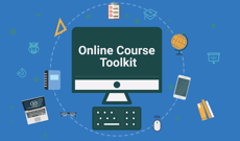The global online learning industry is sporting massive annual growth of 19% or more per year. Just imagine that 63% of American high school students are already using digital learning tools daily.
We can sigh nostalgically and say that gone are the days when students had to carry a bag full of heavy books every day. But now they can use a single device to access the entire year’s learning materials—this is much more convenient.
To keep up with online learning trends, institutions, such as publishing houses, universities, and schools strive to create a digital experience that is more interactive and engaging. And as workbooks are the foundation of all educational activities, they shift to digital as well.
The question that remains is how to create interactive workbooks that provide a meaningful, thorough, and entertaining learning process for students. Let’s see what we suggest.
What Is an Interactive Workbook?
An interactive workbook is an online version of a student practice book that contains educational materials, tasks, and tests with captivating elements to help students practice what they have learned in the classroom. It’s like a printed workbook that comes to life with extra digital features and visual aids to enhance the learning experience. Sounds pretty amazing, right?
There are many various tools that offer you different features to enhance your workbook, so choose them according to your needs. For instance, with FlippingBook, you can create a professional-looking interactive worbook with a smooth page flip efect right from a PDF. Such workbook is available as a link, so your students can open it right away on any device and enjoy a great reading experience. You can also add videos, pop-up images and galleries, links, GIFs, and forms and quizzes to provide more information and make your workbook engaging to work with. Check out this engaging workbook and see for yourself!
What's more, your students can add notes on pages to bookmark important info or write down comments and questions for their studies or work and save them for later reference (notes are private, only the person who adds them can see them). Plus, your students can add notes with their questions or answers, save them as PDFs with comments, and send you for review.
Let's see what interactive features you can add to your online workbook.
Interactive Navigation
Navigating around an interactive workbook can be even faster than around a printed copy. And definitely much handier than around a plain PDF.
- Text search allows students to find any particular word, phrase, or exercise in seconds.
- Thumbnails, or small page previews, help readers find any page quickly.
- An interactive table of contents lets students navigate through sections and chapters of the document simply by clicking on their titles—no need to look through the entire workbook.
Videos
Videos are an excellent way to enhance the interactivity of a digital workbook. Adding videos makes the learning process more effective and entertaining for students compared to using still images, thus, a reliable video maker can come in handy. Here are a few ideas for the videos you can embed into your workbook:
- Include a preview and a summary of each chapter of your workbook. The preview will help understand the topic of the lesson right away and the summary will help repeat what the students have already learned during the lesson.
- Enrich a text or a text excerpt. Whether your students study literature, history, sociology, or anthropology, they can always benefit from contextualization of a person, place, or thing they’re learning about. Video clips can assist them in visualizing an event or a person while setting the context historically, politically, socially, and emotionally.
- Add whiteboard or explainer videos to visualize difficult concepts and make them easier to comprehend.
- Offer additional video resources to solidify and deepen new knowledge, as well as to support facts and data.
Pop-up Images
Static images are already a thing of the past. Nowadays images are used to enhance the readers’ understanding of the material you cover.
Converting PDFs to digital workbooks for students with the help of FlippingBook Online lets you do exactly this—you turn a regular image into a pop-up, a clickable high-resolution preview that serves as a pictorial representation of a topic or explains a text graphically. The comfortable learning experience is one of the essential characteristics of a workbook in the 21st century.
GIFs
GIFs are the perfect medium to drive home any complex messages, for example, to explain new concepts or animate data in your educational materials, showing each step of any process in short how-to guides.
New data or graphics can be quite hard to describe in a few words or images; they require video instructions. That’s why the looping effect of animated GIFs can be very helpful in such cases, allowing your students to watch GIFs as many times as they need until the concept is clear.
Forms and Quizzes
Fillable forms and quizzes are great for crafting compelling interactive coursebooks and workbooks for your students. Add a test at the end of each chapter to check how your students are doing or integrate a quiz to help them learn new material in a fun and engaging way. Plus, you can gather feedback from parents and students through a form to create a closer relationship with your class and make the learning process more efficient.
Links
You can make any content in your digital workbook clickable: text, images, infographics, and, of course, links themselves. Use all the options you have—include clickable in-text citations, make references to the mentioned data, or link back to relevant resources both students and parents could benefit from.
More Perks of Interactive Workbooks
Creating a workbook online brings you many new exciting opportunities in regard to convenient use and neat appearance. Here are just a few of the cool features you might like:
- Design and branding: you can brand your workbooks in your traditional school or university colors, add your logos, and create a special-themed background for every subject and type of a workbook. When your learning materials look modern and stylish, students are more willing to work with them. Plus, this shows your professionalism and expert status.
- Fast and easy access: unlike PDFs, interactive workbooks don’t require downloading—you simply send a link to the workbook via email or messenger or embed it into your learning platform.
- Easy content updates: you can make as many edits to your workbook as you need, the links will stay the same. Teachers and students will always have up-to-date materials at hand.
💡 Pro tip
If you’re wondering how to create a workbook to sell it online, interactive workbooks can be your best choice. Just create a preview of a workbook and send the link to it or embed it into your website or online shop. Thus, you will showcase your learning materials at their best and encourage readers to buy them.
Plus, with FlippingBook’s customizable lead capture form, you can gather any lead info right inside the workbook preview, and then follow up with your leads.
Read more about the benefits of publishing workbooks and flipbooks and using them as an e-Learning tool in this guide:
Transform Your Educational Materials with FlippingBook
Start creating engaging and professional-looking workbooks today





